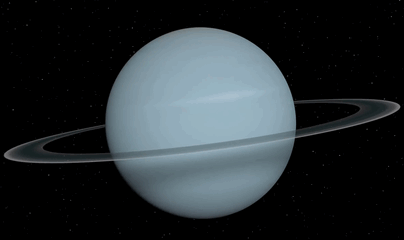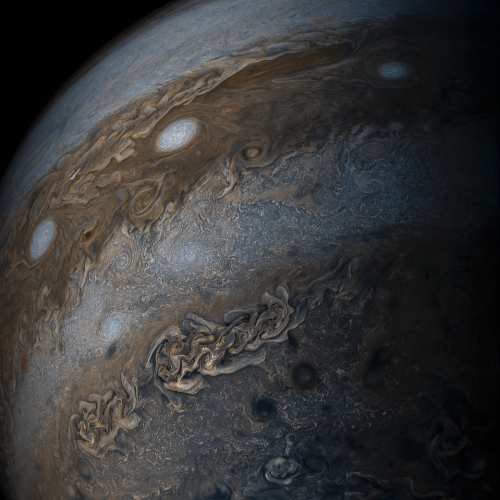A Movie Showing The Dynamics Of The Inner Part Of The Crab Nebula Made Using The Chandra X-ray Observatory.

A movie showing the dynamics of the inner part of the Crab Nebula made using the Chandra X-ray Observatory.
Credit: NASA/CXC/ASU/J.Hester et al.
More Posts from Xyhor-astronomy and Others

Planet Uranus ♅
Equatorial Diameter: 51.118 km
Satellites: 27
Notable satellites: Oberon, Titania, Miranda, Ariel & Umbriel
Orbit Distance: 2.870.658.186 km (19 AU)
Orbit Period: 84 Earth years
Surface Temperature: -220°C
Discovered Date: March 13th 1781
Discovered By: William Herschel
Image credit: Oscar Malet










Ask Ethan: Why don’t we build a telescope without mirrors or lenses?
“Why do we need a lens and a mirror to make a telescope now that we have CCD sensors? Instead of having a 10m mirror and lens that focus the light on a small sensor, why not have a 10m sensor instead?”
Every time you shine light through a lens or reflect it off of a mirror, no matter how good it is, a portion of your light gets lost. Today’s largest, most powerful telescopes don’t even simply have a primary mirror, but secondary, tertiary, even quaternary or higher mirrors, and each of those reflections means less light to derive your data from. As CCDs and other digital devices are far more efficient than anything else, why couldn’t we simply replace the primary mirror with a CCD array to collect and measure the light? It seems like a brilliant idea on the surface, and it would, in fact, gather significantly more light over the same collecting area. True, CCDs are more expensive, and there are technical challenges as far as applying filters and aligning the array properly. But there’s a fundamental problem if you don’t use a mirror or lens at all that may turn out to be a dealbreaker: CCDs without lenses or mirrors are incapable of measuring the direction light is coming from. A star or galaxy would appear equally on all portions of your CCD array at once, giving you just a bright, white-light image on every single CCD pixel.
It’s a remarkable idea, but there’s a good physical reason why it won’t pan out. For the foreseeable future, we still need optics to make a telescope! Find out why on this week’s Ask Ethan.
Oldest recorded solar eclipse helps date the Egyptian pharaohs

UNIVERSITY OF CAMBRIDGE—Researchers have pinpointed the date of what could be the oldest solar eclipse yet recorded. The event, which occurred on 30 October 1207 BC, is mentioned in the Bible, and could have consequences for the chronology of the ancient world.
Using a combination of the biblical text and an ancient Egyptian text, the researchers were then able to refine the dates of the Egyptian pharaohs, in particular the dates of the reign of Ramesses the Great. The results are published in the Royal Astronomical Society journal Astronomy & Geophysics.
The biblical text in question comes from the Old Testament book of Joshua and has puzzled biblical scholars for centuries. It records that after Joshua led the people of Israel into Canaan - a region of the ancient Near East that covered modern-day Israel and Palestine - he prayed: “Sun, stand still at Gibeon, and Moon, in the Valley of Aijalon. And the Sun stood still, and the Moon stopped, until the nation took vengeance on their enemies.” Read more.
Space Station flight from a clear North Africa over a story Mediterranean
(CNN) On October 19, the Pan-STARRS 1 telescope in Hawaii spotted something strange zooming through our solar system. It turned out to be a visitor from beyond our solar system, and it's unlike anything astronomers have seen before.

Jupiter’s Bands of Clouds
This enhanced-color image of Jupiter’s bands of light and dark clouds was created by citizen scientists Gerald Eichstädt and Seán Doran using data from the JunoCam imager on NASA’s Juno spacecraft.
Three of the white oval storms known as the “String of Pearls” are visible near the top of the image. Each of the alternating light and dark atmospheric bands in this image is wider than Earth, and each rages around Jupiter at hundreds of miles (kilometers) per hour. The lighter areas are regions where gas is rising, and the darker bands are regions where gas is sinking.
Credits: NASA/JPL-Caltech/SwRI/MSSS/Gerald Eichstädt /Seán Doran

While stuck in traffic in 1961, James Powell, a young researcher at Brookhaven National Laboratory came up with the idea of using powerful magnets to lift and propel massive passenger-carrying cars. Over the next seven years, he and his colleague Gordon Danby spent their spare time piecing together a concept. They obtained a patent for the breakthrough in 1968. Powell and Danby’s magnetic levitation, or maglev, technology must have seemed like magic back then, but it is now being used to move large trains at speeds up to 375 miles per hour!
Not content to rest on this sole accomplishment, the 84-year-old Powell now has grander ambitions for his maglev breakthrough. In 2001, he teamed up with George Maise, an aeronautical engineer and 23-year veteran of Brookhaven National Laboratory, to put forth an idea to revolutionize space launches: StarTram.
Continue Reading.
How to Discover a Planet: A short step-by-step guide on how each of our planetary neighbors were originally discovered.

The Space Shuttle Challenger at a foggy Cape Canaveral, 1984.
(NASA/Department of Defense)



(Causus maculatus) - Common names include forest rhombic night adder, West African night adder and spotted night adder.
-
 unsuredefleur liked this · 2 weeks ago
unsuredefleur liked this · 2 weeks ago -
 moonangelus liked this · 8 months ago
moonangelus liked this · 8 months ago -
 demichrising liked this · 1 year ago
demichrising liked this · 1 year ago -
 tenatiger liked this · 1 year ago
tenatiger liked this · 1 year ago -
 sparkyairstuff liked this · 3 years ago
sparkyairstuff liked this · 3 years ago -
 especiallymeprobabylyyou liked this · 3 years ago
especiallymeprobabylyyou liked this · 3 years ago -
 thomasbrisenio reblogged this · 4 years ago
thomasbrisenio reblogged this · 4 years ago -
 coolandhawwt liked this · 4 years ago
coolandhawwt liked this · 4 years ago -
 poohpoohtud reblogged this · 4 years ago
poohpoohtud reblogged this · 4 years ago -
 megacosms reblogged this · 4 years ago
megacosms reblogged this · 4 years ago -
 thomasbrisenio reblogged this · 4 years ago
thomasbrisenio reblogged this · 4 years ago -
 n3v3r3v3rrr reblogged this · 4 years ago
n3v3r3v3rrr reblogged this · 4 years ago -
 mapache-albino liked this · 4 years ago
mapache-albino liked this · 4 years ago -
 26sa liked this · 4 years ago
26sa liked this · 4 years ago -
 luckybadkids reblogged this · 4 years ago
luckybadkids reblogged this · 4 years ago -
 mbvsfo reblogged this · 4 years ago
mbvsfo reblogged this · 4 years ago -
 nigels-commonwealth liked this · 4 years ago
nigels-commonwealth liked this · 4 years ago -
 nehcterg reblogged this · 4 years ago
nehcterg reblogged this · 4 years ago
For more content, Click Here and experience this XYHor in its entirety!Space...the Final Frontier. Let's boldly go where few have gone before with XYHor: Space: Astronomy & Spacefaring: the collection of the latest finds and science behind exploring our solar system, how we'll get there and what we need to be prepared for!
128 posts